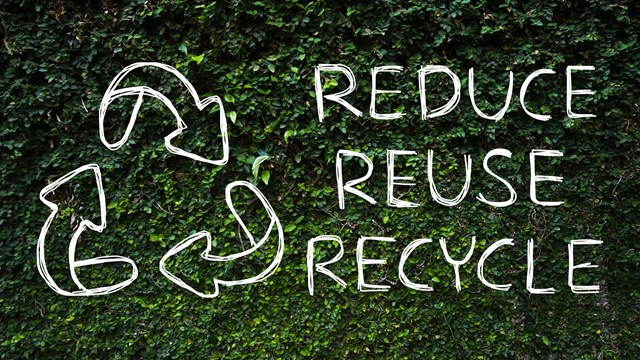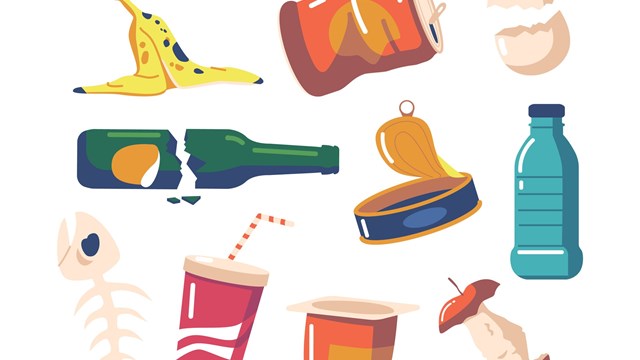In the past, talking about garbage in New York City was left to disgruntled residents or comedians who were looking for something funny about the Big Apple to joke about.
In days gone by, when you opened something up, you simply threw away the packaging. You ate your dinner and threw away the scraps, and you tossed your ratty old sweatshirt, t-shirt or jeans in the dumpster when they had more holes in them than a chunk of Swiss cheese.
A Throw-Away Society
It’s not surprising then, that as a nation, Americans generate more waste than any other nation in the world with 4.6 pounds of municipal solid waste per person per day—fifty-five percent of which is contributed as residential garbage. It is estimated, for example, that Americans use 2,500,000 plastic bottles every hour, with the majority of them being thrown away.
And it’s no wonder that New York City’s eight million residents—as well as millions of businesses, construction projects and visitors—generate as much as 50,000 tons of garbage every day. You cannot walk down a city street without seeing those ubiquitous black garbage bags piled higher and higher upon the sidewalk.
We've come a long way from there in many regards. Today that journey of your old t-shirt and jeans or your Friday dinner leftovers entering the waste stream from garbage to landfill can take a very different route. That shirt or jeans can now be donated to a textile recycling center; the food scraps can now be composted; and every package you open is broken down and recyclable pieces are put in their appropriate containers.
In nearly every community, a variety of city and statewide initiatives exist to reduce the annual amount of garbage going into the waste stream. Recycling programs are in place for paper/cardboard and textiles, bottles and cans and electronic waste or e-waste. Most recently, composting programs have gained momentum in residential communities.
In April, Mayor Bill de Blasio announced OneNYC, a list of lofty initiatives that includes sending zero waste to landfills (right now 76 percent of New York City’s trash is sent to landfills in Pennsylvania, Ohio, Virginia, and South Carolina) and reducing waste disposal by 90 percent by 2030. There are also recycling programs in place for paper, electronics and even textiles. Most recently, there is also the newest creation of composting programs.
One Building's Efforts
It’s usually the gym or granite countertops that residents gloat about when talking about their buildings—not the trash maintenance. But if you ask Barbara Goldberg, a shareholder and board member at 800 West End Avenue, she’ll tell you that she’s been extremely impressed with how her building’s board and staff have dealt with the community garbage as well as the recycling program.
“We decided to try composting in our building and the board was very enthusiastic,” says Linda Movish, chair of the 800 West End Avenue’s Green Committee, a group founded approximately five years ago when the building, (a 15-story, 89-unit co-op), needed a new boiler. To learn more about recycling and reducing waste, Movish attended the Manhattan Solid Waste Advisory Board’s screening of “Racing to Zero,” a documentary that explored San Francisco’s goal of reaching zero waste.
“We set up a meet-and-greet in the lobby and talked to the residents about composting as they came home from work and school,” says Movish. She and her committee tapped into local resources for help, including GrowNYC, a non-profit organization that provides education on green recycling topics. GrowNYC provided flyers, hosted a question and answer session and provided updates on recycling issues.
“We had a good response,” says Movich. “One of our selling points was that the city will eventually go to mandatory composting, so we should know all about it.”
It’s not mandatory yet, but the NYC Compost Project, run by the New York City Department of Sanitation (DSNY), helps New Yorkers learn more about composting with workshops and courses. A composting program to collect organic material is expanding to nearly 200,000 residents by year's end, and city officials want to serve every home by the end of 2018. There are also economic incentives to participate, including the potential of a property tax rebate for homeowners.
Knowing More is Better
From throwing away trash, to recycling and composting, educating the building staff and residents is key and that education starts at the beginning—knowing where all of that garbage goes.
The rules of trash disposal are pretty simple. Residents must put all of their household garbage into securely-tied, heavy-duty non-transparent bags or leak-proof bins with tightly-fitting lids and there is no limit to the number of bags that they can put out for collection. However, not everything can be thrown away. For example, paint cans cannot be disposed of and must be taken to a special waste drop off site. Residents must also recycle glass, metal, rigid plastic, beverage cartons; paper and cardboard. To learn about other items that require specialized disposal, visit the DSNY’s website.
According to the Citizen Budget Commission report, New York City’s trash is handled by two separate systems—one private and one public. DSNY serves residential buildings such as 800 West End Avenue, as well as commercial and non-profits. Of the 3.8 million tons DSNY collects annually, 14 percent is recycled. Of the waste collected by private carters, about 63 percent is recycled. Ten percent of what is collected is converted to energy.
GrowNYC says that paper waste that is properly separated from regular garbage is recycled locally or is processed for further recycling overseas. Glass, metal and plastics collected at the curbside are sent to New Jersey, where they are processed and sent to various recycling markets. However, New York City residents currently recycle only about 17% of their total waste---half of what they could be recycling under the current program.
“Our green committee does a fabulous job of providing residents with recycling education,” says Tim Lannan, chairman of the 800 West End board.
And that means keeping the staff and residents up-to-date on changes in trash, composting and recycling laws. For example, industry experts estimate that U.S. consumers throw away 400 million units of electronic equipment—cell phone and computers, for example—per year. As of January 1, 2015, consumers may no longer dispose of certain types of electronic equipment in landfills, waste-to-energy facilities, in the trash, or at curbside for trash pickup.
“No more e-waste can go to landfills, it has to be recycled,” says Jessica Schreiber, senior manager of apartment programs and outreach for the DSNY. “Residents can comply with the law and drop off electronic waste at any of the city’s 95 drop off points. We also host collection events 10 times a year, twice in each bureau. All consumers have to do is drive up to the event and we take the items right out of the car. We can also provide door-to-door pickup services.”
Other Resources
The DSNY has a variety of training programs for residential building staff and residents. “Residents are required to recycle, but building owners and managers have to provide a way to do it,” says Schreiber. “Our apartment building recycling initiative is a one-hour training course for resident managers and co-op boards who are interested in improving their building.”
To help residents comply, Schreiber recommends drawing attention to the process when a new resident signs a lease. “We have literature for residents as well as a sticker for the fridge and other information,” she says.
The Sanitation Department also hosts safe disposal events to get rid of solvents, automotive fluids and flammables. “We get a lot of Gatorade bottles of mercury, tires and other things that are out of the ordinary,” says Schreiber. “Unfortunately, sometimes dead animals end up in the normal garbage.”
Biohazard materials are not allowed to be thrown away with household trash. That includes hypodermic needles and syringes. “Residents can bring anything that’s a biohazard to the hospital,” says Schreiber.
For residents or building staff and managers who need additional help disposing of garbage, companies such as 1-800-GOT-JUNK can help. “Board members call to clean up their basements or they have us come in and clean out apartments,” says Jaime Castaneda, operations manager for 1-800-GOT-JUNK Manhattan. “We take a look at their stuff and see what can be donated and recycled.”
For example, one building on the Lower East Side needed Castaneda’s help with a particular piece of furniture. “There was a 1920s Swedish antique wardrobe that had been built into the attic and there was no way to get it out, so it had to be smashed up,” he says. “A resident of another building had broken up with her husband and wanted us to pick up everything of his—brand new clothes, electronics and more.”
His company has also been called to help with the occasional hoarder issue. “We don’t remove any of the hazardous materials,” he says. “We’ve also helped managers empty apartments when the person has passed away.”
Loren Pomerantz, the president of Combined Forces Public Relations, says that recycling and taking care of the environment is very important to her, so she’s pleased that the staff of her building, a co-op at 301 East 62nd Street, makes it easy to comply, not only with the laws but to her own agenda of environmentalism. “We have a very dedicated and attentive building staff,” she says. “We also have garbage chutes on every floor with bins for separate recycling: paper/plastic and glass.
Looking Ahead
It’s still a long way until 2030, when Mayor de Blasio hopes to see that 90 percent reduction in waste, but getting that New Yorker to stop and think about where they are putting their garbage is a start and the benefits are many. According to the New York State Department of Environmental Conservation (DEC), waste reduction, reuse, recycling and composting can save energy, reduce pollution, foster an environmental ethic among citizens, increase carbon sequestration and conserve natural resources.
And it’s working already. Reports show that, thanks to recycling programs, the amount of waste produced by the city has already dropped 14 percent since 2005. And to paraphrase Apollo 11 astronaut Neil Armstrong, that’s one small step for man, one giant leap for mankind.
Lisa Iannucci is a freelance writer and a frequent contributor to The Cooperator.







Comments
Leave a Comment